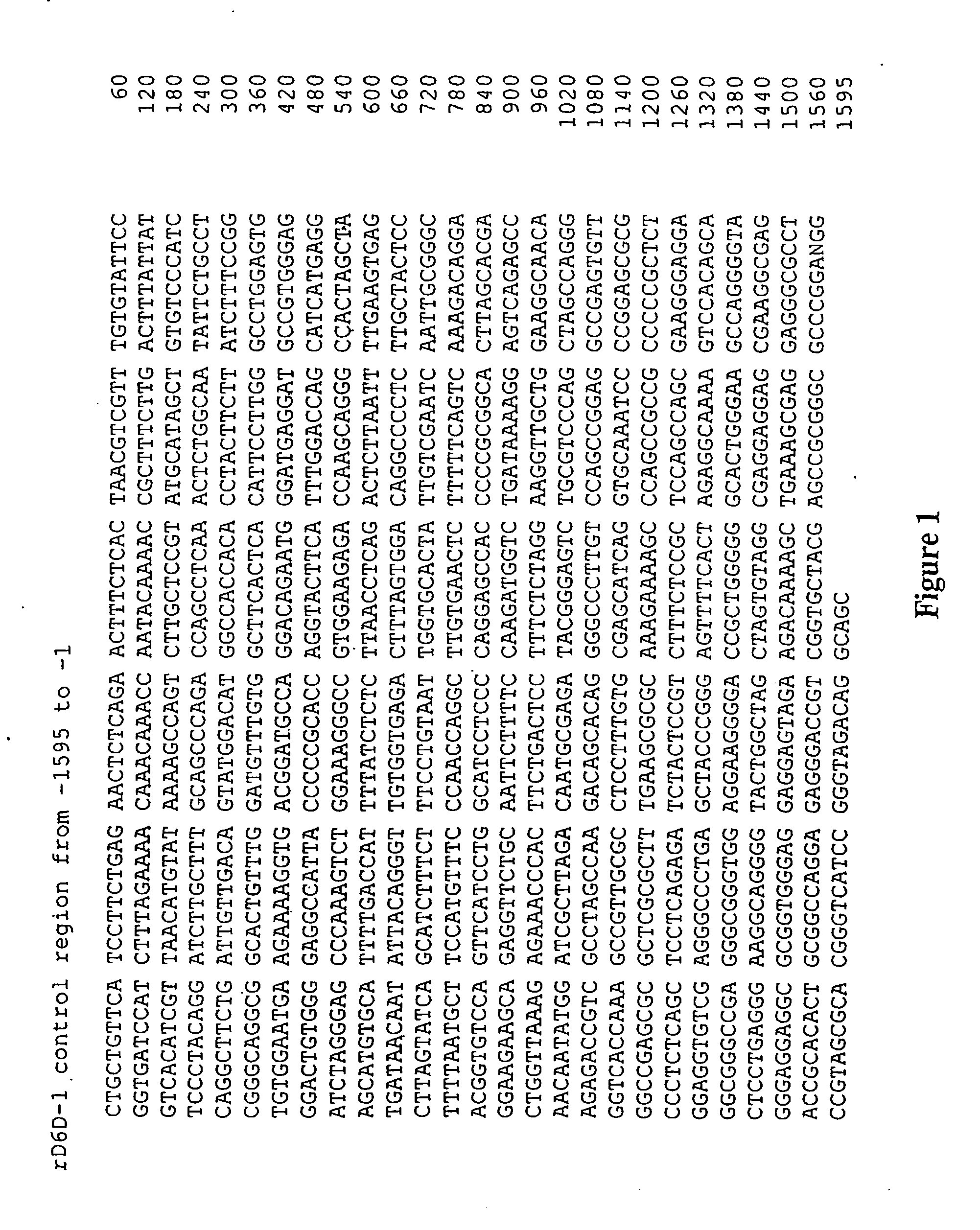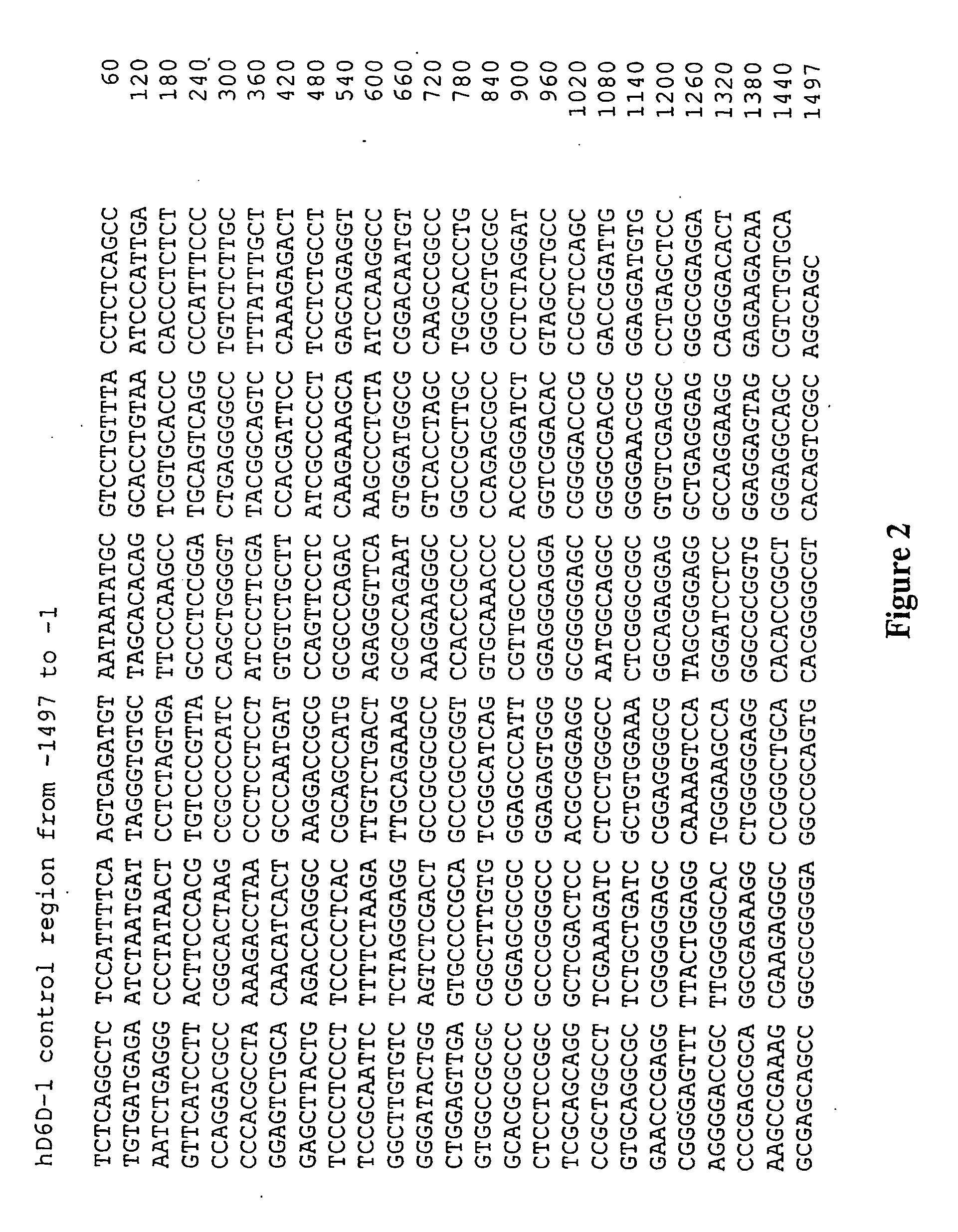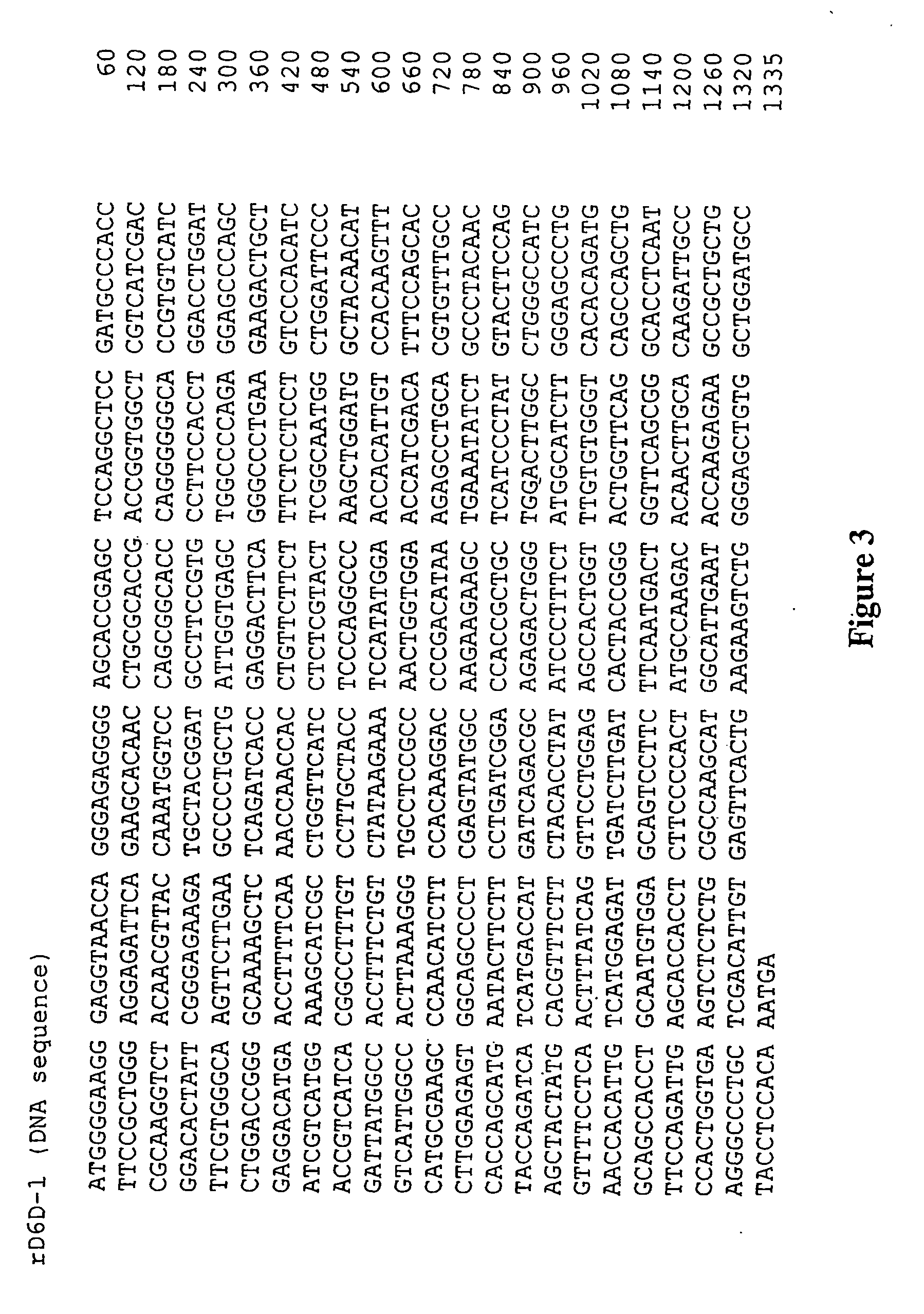Polynucletides that control delta-6 desaturase genes and methods for identifying compounds for modulating delta-6 desaturase
a technology of desaturase and polynucleotide, applied in the field of polynucleotides, can solve the problems of enlarged kidneys and thyroid glands, enlarged kidneys and reduced adrenal and thyroid glands, cholesterol accumulation, and dramatic weight loss
- Summary
- Abstract
- Description
- Claims
- Application Information
AI Technical Summary
Benefits of technology
Problems solved by technology
Method used
Image
Examples
example 1
Human Diabetic Clinical Study
[0255] In order to determine the relationship between lipid profiles and the expression of lipid metabolic genes in insulin-dependent (IDDM, Type 1) and non-insulin dependent (NIDDM, Type 2) diabetics, a clinical study was conducted with diabetic patients and with an age-matched control population.
[0256] The study examined the lipid profiles in about eighty insulin dependent and non-insulin dependent diabetics. Both types of diabetes are associated with impaired fatty acid metabolism. The data shown below in the following tables were obtained in a clinical study completed at QuantaNova Canada Ltd. The data indicate that there are significant differences in the fatty acid profiles of red blood cell phospholipids and plasma phospholipids between diabetics and the controls.
[0257] The changes observed in the serum chemistry data were consistent with other published studies. Table 2 shows the increase in triglyceride and subsequent decrease in the HDL levels ...
example 2
Streptozotocin-Induced Diabetic Rat Study
[0278] This study was designed to compare and correlate changes in the concentrations of tissue fatty acids to the activity of fatty acid delta-5 and delta-6-desaturases.
[0279] Rat Liver Fatty Acid Profiles
[0280] This part of the study was designed to compare the changes in tissue fatty acid profiles from different lipid classes between streptozotocin induced diabetic rats and control rats. For the purpose of this report all changes in fatty acid levels reported are significant to p<0.01.
[0281] Table 5 contains fatty acid data from the phospholipid fraction in rat liver. Although data from the other main lipid classes (i.e. triglycerides, cholesterol esters and free fatty acids) show substantially similar trends, only the phospholipid data is presented herewith. These data help to demonstrate the activities within the n-6 and n-3 fatty acid metabolic pathways. The relative amount of linoleic acid (LA) increased in both the 2 and 7 week diabet...
example 3
Rat Liver Delta-6 and Delta-5Desaturase Activity in Experimental Diabetes
[0316] This part of the study was designed to compare the activities of fatty acid desaturases between streptozotocin-induced diabetic rats and controls.
[0317] All statistical comparisons were made between treated and control animals sacrificed at the same time point since age could be a factor that affects the fatty acid desaturase activities (Hrelia et al., 1989, Biochem. Biophys. Res. Comm., 163: 348-355).
[0318] The fatty acid delta-5 and delta-6desaturase activity (expressed in pmol per mg of microsomal protein per min) were significantly reduced by approximately 37% and 28%, respectively, in hyperglycaemic animals sacrificed 2 and 7 weeks after the onset of diabetes (Table 6).
7TABLE 6 Hepatic fatty acid desaturase activity in n rmal and streptozotocin treated rats. Time after Activity (pmol / mg STZ Treatment microsomal protein / min) Rat (weeks) D6D D5D Control 2 172.9 .+-. 21.sup. 290.6 .+-. 40.sup. STZ 2 12...
PUM
| Property | Measurement | Unit |
|---|---|---|
| TM | aaaaa | aaaaa |
| thickness | aaaaa | aaaaa |
| temperatures | aaaaa | aaaaa |
Abstract
Description
Claims
Application Information
 Login to View More
Login to View More - R&D
- Intellectual Property
- Life Sciences
- Materials
- Tech Scout
- Unparalleled Data Quality
- Higher Quality Content
- 60% Fewer Hallucinations
Browse by: Latest US Patents, China's latest patents, Technical Efficacy Thesaurus, Application Domain, Technology Topic, Popular Technical Reports.
© 2025 PatSnap. All rights reserved.Legal|Privacy policy|Modern Slavery Act Transparency Statement|Sitemap|About US| Contact US: help@patsnap.com



